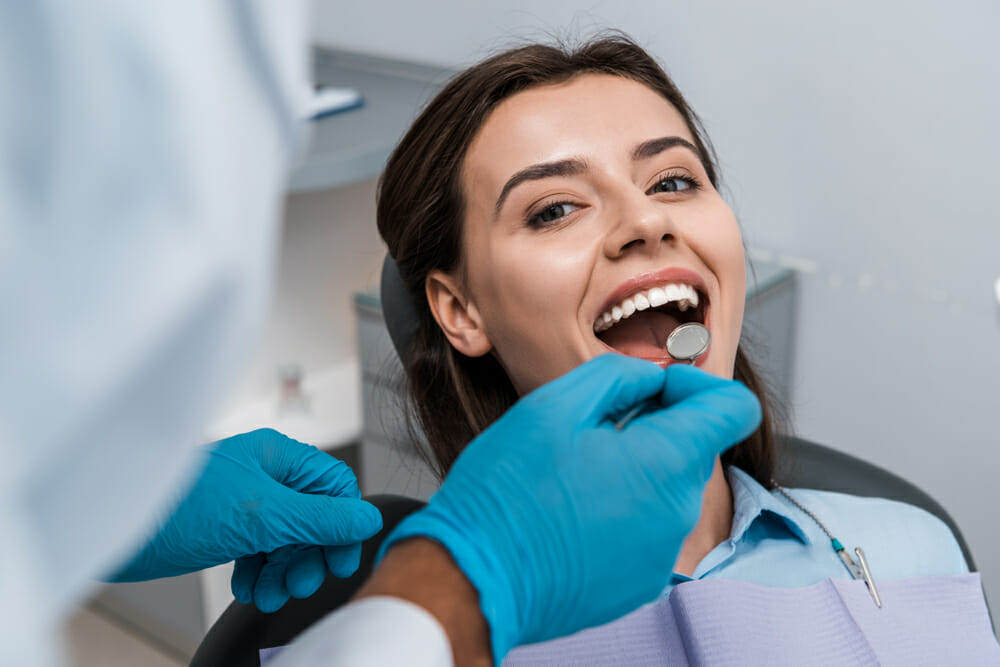The 4-Minute Rule for Legacy Orthodontics
Table of ContentsNot known Incorrect Statements About Legacy Orthodontics The Only Guide to Legacy OrthodonticsLegacy Orthodontics for BeginnersTop Guidelines Of Legacy OrthodonticsThe 3-Minute Rule for Legacy Orthodontics
In addition, we supply adjustable treatment routines, flexible settlement options and an enjoyable, pleasurable experience.An orthodontist is a dental expert educated to identify, avoid, and deal with teeth and jaw abnormalities. Orthodontists work with people of all ages, from kids to adults.
Malocclusion, or misaligned teeth, can bring about dental problems, consisting of dental cavity, periodontal disease, and tough or uncomfortable chewing. But not everyone is born with straight teeth. If you have a bad bite or large spaces in between your teeth, you may intend to speak with a dental practitioner concentrating on orthodontic treatment.
Legacy Orthodontics Fundamentals Explained
( Photo Credit Rating: DigitalVision/Getty Images) Orthodontists utilize fixed and removable dental devices, like braces, retainers, and bands, to change the placement of teeth in your mouth. Orthodontic treatment is for oral irregularities, including: Jagged teethBite issues, like an overbite or an underbiteCrowded teeth or teeth that are also much apartJaw misalignmentThe goal of orthodontic therapy is to boost your bite.
While you could think of orthodontists as mainly for youngsters or young adults that require dental braces, they can fix dental issues at any type of age. Orthodontists attend university, dental school, and orthodontic institution.
All orthodontists are dental practitioners, but not all dental professionals are orthodontists. Orthodontic residency programs offer extensive, focused instruction for oral professionals. They concentrate on two locations: Exactly how to effectively and safely relocate teeth Exactly how to properly assist growth in the teeth, jaw, and faceOnce an orthodontist has finished training, they have the alternative to become board licensed.
Some Known Factual Statements About Legacy Orthodontics
Malocclusion leads to tooth congestion, an askew jaw, or irregular bite patterns. Malocclusion is generally treated with: Your orthodontist affixes steel, ceramic, or plastic square bonds to your teeth.
If you have only small malocclusion, you might have the ability to make use of clear braces, called aligners, as opposed to typical braces (https://pastebin.com/u/legacyortho). Some people require a headwear to help relocate teeth right into line with stress from outside the mouth. After dental braces or aligners, you'll need to put on a retainer. A retainer is a custom-made tool that maintains your teeth in position.
They're usually made use of on kids. They can produce added area in the mouth without having to draw teeth. If you have a significant underbite or overbite, you might need orthognathic surgical treatment (also called orthodontic surgery) to extend or reduce your jaw. Orthodontists use wires, surgical screws, or plates to support your jaw bone.
You might need to see an orthodontist if you have: Crowding or otherwise enough room for all of your teethOverbite, when your upper teeth come over your bottom teethUnderbite, when your base teeth are too much Get the facts forwardSpacing or problems with gapsCrossbite, which is when your top teeth fit behind your base teeth when your mouth is closedOpen bite or an upright space between your front base and upper teethMisplaced midline, when the center of your bottom and top teeth don't line up Dealing with a dental malocclusion can: Make attacking, eating, and speaking easierImprove the proportion of our face and your overall appearanceEase discomfort from temporomandibular joint problemsDifferent your teeth and make them easier to clean up, helping prevent dental caries or cavities It's usually a dental practitioner that first notifications misaligned teeth during a regular exam.
What Does Legacy Orthodontics Mean?

Throughout your initial orthodontic examination, you'll likely have: An oral examPhotos taken of your face and smileDental X-raysPanoramic (360 degree) X-rays of your face and headImpressions to produce molds of your teethThese examinations will assist your orthodontist know just how to wage your treatment. orthodontist. An orthodontist is a dentist who's had training to treat your teeth and jaw
An orthodontist is concentrated on your bite, so something like a damaged tooth would certainly be managed by a dentist. Orthodontists are concentrated on your bite, or the method your teeth fit together, and the straightness of your teeth.
Ever asked yourself exactly how celebrities always seem to have perfectly aligned teeth? Orthodontists are oral professionals who concentrate on dealing with irregularities in the teeth and jaws.
Get This Report about Legacy Orthodontics

While braces are the most commonly recognized orthodontic treatment, orthodontists have a varied toolkit at their disposal. The details approach chosen depends upon the intensity of the instance, the person's age, and specific choices. These tried-and-true braces make use of a system of braces bonded to the teeth and linked by cables.
Clear aligners, like Invisalign, are a popular choice for people looking for a more discreet treatment choice. These removable trays are customized to progressively shift the teeth's placement. Headgear may be made use of combined with dental braces or aligners to apply additional targeted pressures, specifically for dealing with jaw inconsistencies. In cases of slim jaws, palatal expanders can be made use of to develop area for correct tooth positioning.